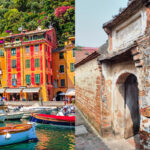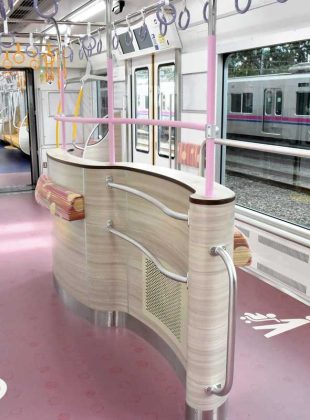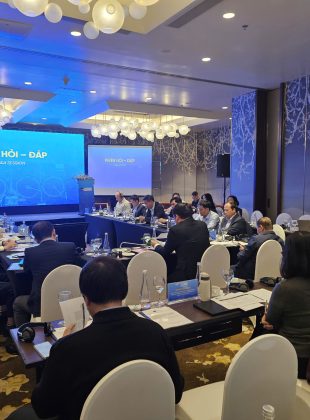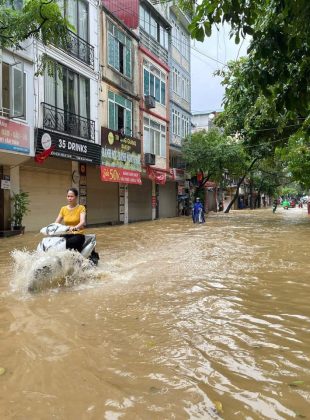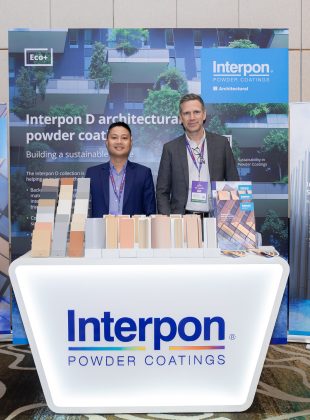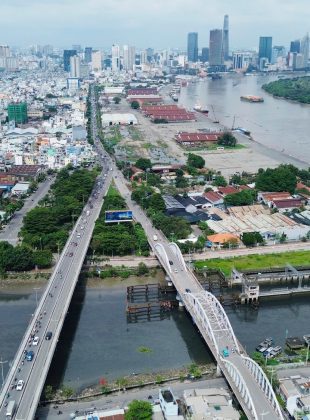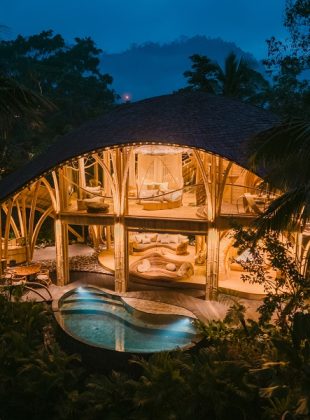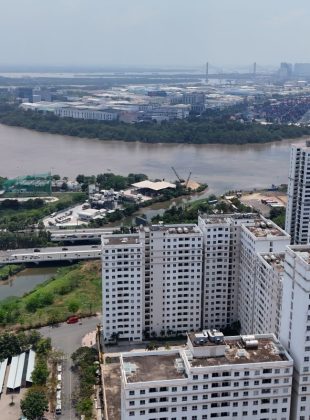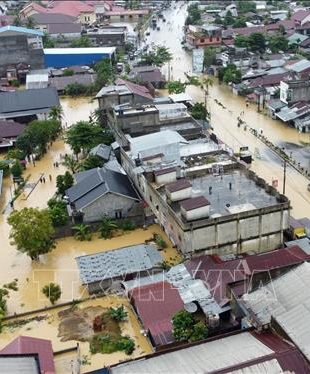French architecture in Vietnam is a meticulously preserved and protected legacy. The success of these preservation efforts relies heavily on the dedication of those who guard this heritage, particularly those with expertise to maintain and develop these treasures. In an interview with The Saigon Times, Ho Thieu Tri, the restorer of the Hanoi Opera House, and Michel Regembal, one of the architects behind the Stade de France, discuss their efforts to revitalize French architecture in Vietnam.
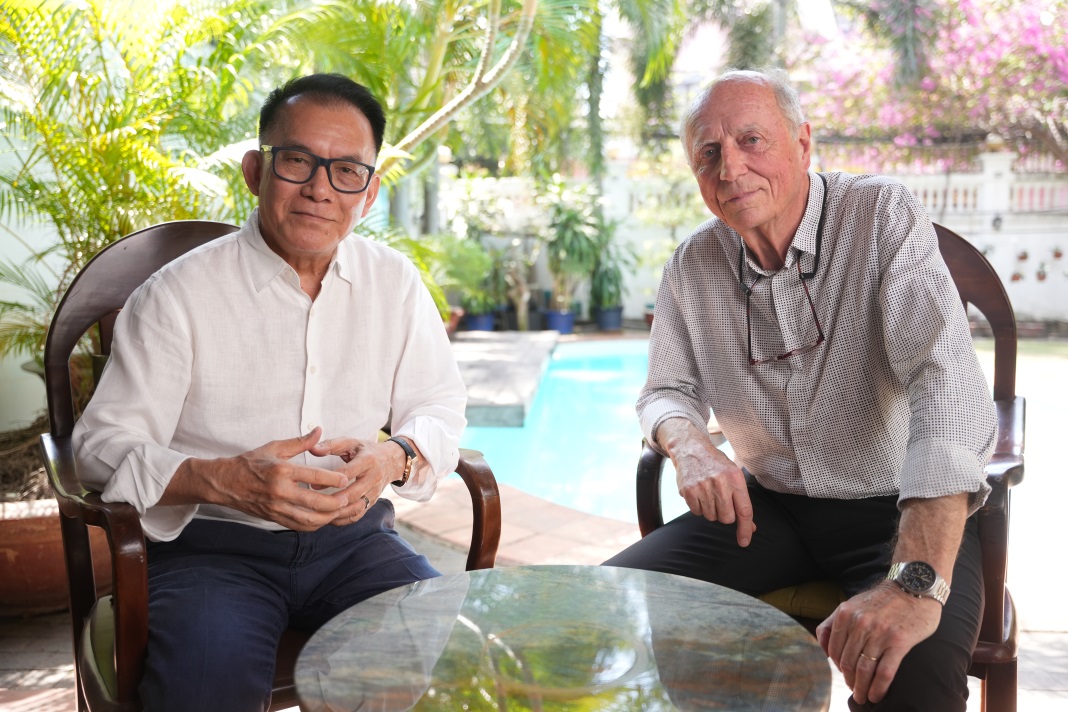
Michel Regembal (R), one of the architects of Stade de France, France’s national stadium, and Ho Thieu Tri, Architect E.S.A.S chairman (Photo: Minh Khoa)
The Saigon Times: As two prominent figures in the architecture industry, how did you first meet and begin your collaboration?
Ho Thieu Tri: I began my architectural career in Paris in 1980 at Pierre de Vinois. In 1981, I joined a firm associated with Pierre de Vinois, led by Michel Regembal. We collaborated on various competition projects in France, achieving notable success. In 1994, I returned to Vietnam to work on the Hanoi Opera House renovation, while Michel was focused on the Stade de France. Our paths crossed initially through our competition successes, and our collaboration has since evolved, leading to significant projects both in France and Vietnam.
Michel Regembal: Our early collaboration was crucial. One of our first major projects together was the École de la Légion d’Honneur in Saint-Denis, a prestigious competition inaugurated by President (François) Mitterrand. Our work on such high-profile projects, like the Hanoi Opera House and Stade de France, has been pivotal in our careers, providing us with opportunities to work on influential projects that have defined our professional journeys.
Can you share some of the projects you’ve worked on in Vietnam?
Michel Regembal: We participated in the design competitions for two of Vietnam’s significant landmarks: the National Stadium and the National Assembly. Our design for the stadium drew inspiration from bronze drums, aiming to embody Vietnamese identity with a distinctive and patriotic image. The National Assembly project was envisioned to showcase Vietnam’s political heart and serve as a symbol of democracy. It was positioned near significant landmarks like the Ho Chi Minh Mausoleum, with the deliberation room highlighted as the core of political discourse, symbolizing Vietnam’s political landscape.
Ho Thieu Tri: Although our designs were not selected, we are proud of them, as they received high acclaim in the competitions. We’ve been working in Vietnam for nearly 30 years. In addition to the projects Michel mentioned, we’ve completed several important works, including the renovation of the Hanoi Opera House in 1997 and the Ho Guom Opera House in 2023, both capturing the essence and aspirations of Vietnam.
You were entrusted with designing the French School Alexandre Yersin, which won first prize and was certified for high environmental quality by International HQE standards. What inspired this concept?
Michel Regembal: The project allowed us to blend French and Vietnamese cultures. Located next to the Long Bien Bridge in a new district, the design focused on creating an airy, green space conducive to learning, reflecting both cultural integration and environmental sensitivity.
Ho Thieu Tri: This project emphasized adapting to Vietnam’s climate with green spaces integrated throughout the design, ensuring good ventilation and a connection to nature. The environmental quality certification highlights our commitment to sustainable architecture.
Given Vietnam’s French architectural influence, how do you view the country’s architectural evolution?
Michel Regembal: I’d like to mention the Independence Palace, which was designed by a Vietnamese architect who studied in France and worked in the same studio as me years earlier. It’s fascinating to see how he conceptualized the project, integrating shadows and trees. The fact that a Vietnamese architect designed this building is remarkable, and it’s important for such structures to remain as part of the city’s history and development. While the cathedral is clearly a project from the colonial era, emphasizing the importance of religion at the time, the design of the Independence Palace captivates me more. Additionally, the Post Office, designed by the famous engineer Gustave Eiffel, is another significant building that adds to the city’s historical and architectural landscape.
Ho Thieu Tri: I agree, and I would add that the Notre-Dame Cathedral is also a crucial landmark for Saigon and its inhabitants. Located in a significant area, with the Independence Palace on one side and the cathedral at the center, it is surrounded by many important projects, including the Post Office mentioned by Michel. These structures are not only architectural landmarks but also continue to attract many tourists, playing a vital role in the city’s identity and heritage.
How do you envision the future of architectural landscapes in Vietnam, particularly regarding sustainability and cultural preservation?
Michel Regembal: Urban planning is the foundation of architecture. Before we build, we plan cities, layout streets, adapt to the natural contours of rivers, and create bridges. Urban planning is crucial. The architecture of buildings, whether they’re defensive structures, religious buildings, or administrative ones, is the result of this planning. Architecture reflects this careful consideration and generates a heritage through the ages. The future must build on the past; we cannot simply erase and start anew. We need to decide what to keep, what to modify, and what to create. By reflecting on these questions, we can hope for harmonious development. It requires a global perspective and a thoughtful approach.
Ho Thieu Tri: Preserving architectural heritage is essential. Like France, where historical buildings are cherished, Vietnam needs to value and maintain its architectural legacy. The renovation approach for the Notre-Dame Cathedral in Paris serves as a model for preserving and enhancing our own heritage.
Now that you two are established in the industry, let’s revisit your early years. What initially caught your eye about architecture and drove your passion for it?
Michel Regembal: My passion for architecture began early. In school, I enjoyed drawing and wanted to be an architect. My father was an engineer, and I wanted to combine technical skills with creativity. For me, architecture is about invention and creation—starting from nothing to create something lasting. There’s a bit of narcissism in wanting to identify with the buildings we design, but also a human dimension in creating spaces that serve people beautifully. The variety of projects keeps the mind active, and meeting diverse people in each project is part of the passion for this profession.
Ho Thieu Tri: Passion is essential in architecture. Without it, one cannot sustain a career in this field. Passion drives creativity and reflection on every project. As architects, we transform dreams into reality, and the process begins with passion. While it’s challenging, staying modest, patient, and dedicated is key. Passion and experience enrich our work, making the journey worthwhile.
With the world focused on the Paris 2024 Olympic and Paralympic Games, as one of the masterminds behind the Stade de France, what are your expectations for the games?
Michel Regembal: The Stade de France project started in 1994 with the goal of hosting the 1998 World Cup and potentially the Olympics. Now, Paris will host the Olympics in 2024, a century after the last ones. It’s a great pride to know that the main events, like athletics, will take place in our stadium. The stadium’s design symbolizes universality and openness. I expect the Games to be a tremendous success, showcasing Paris’s beauty and hospitality. I plan to spend the Games in Paris, welcoming friends and attending various events across France.
Reported by The Ky
(The Saigon Times)



